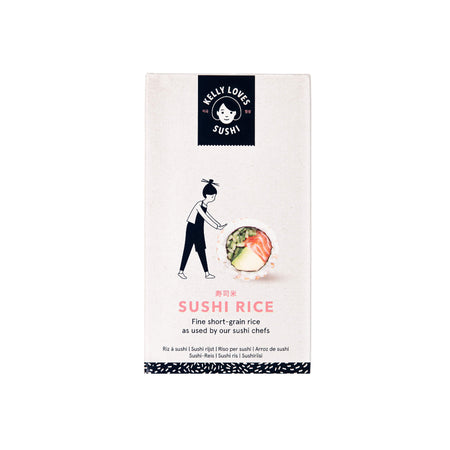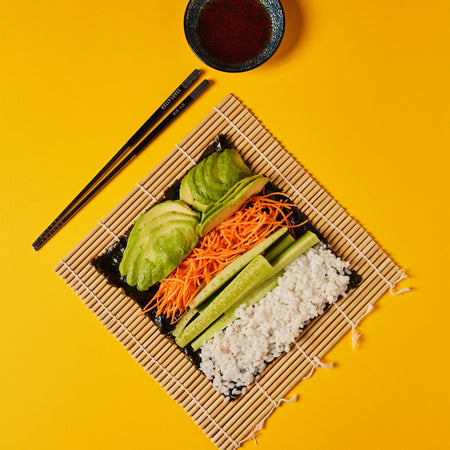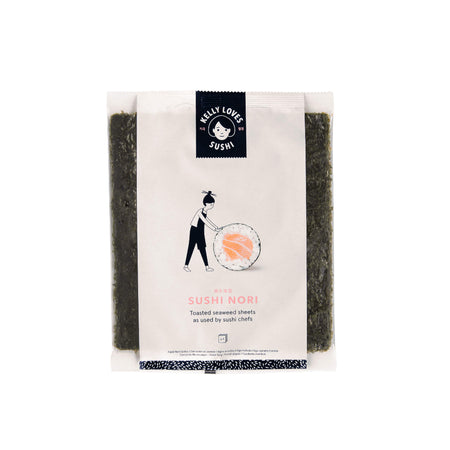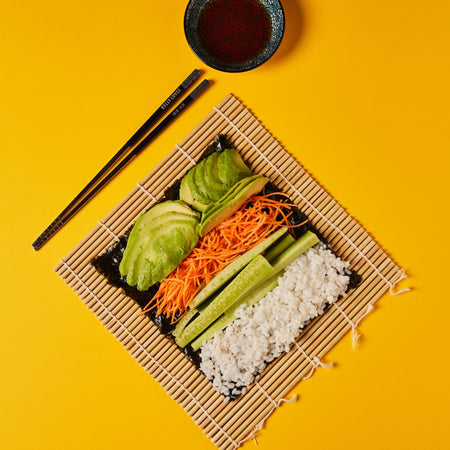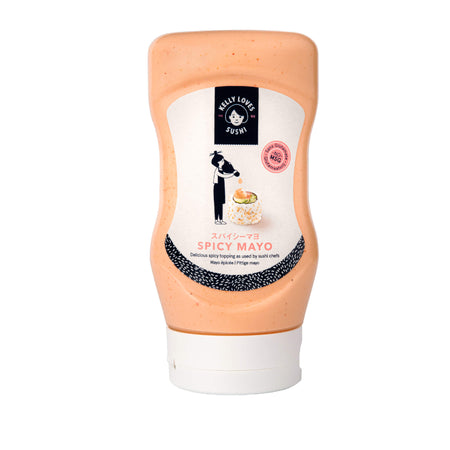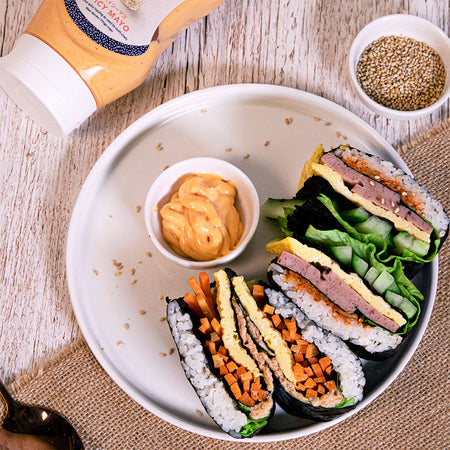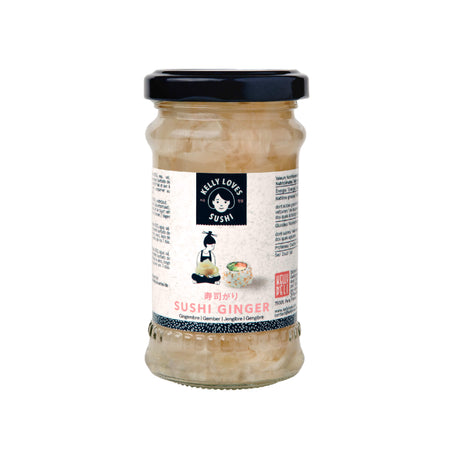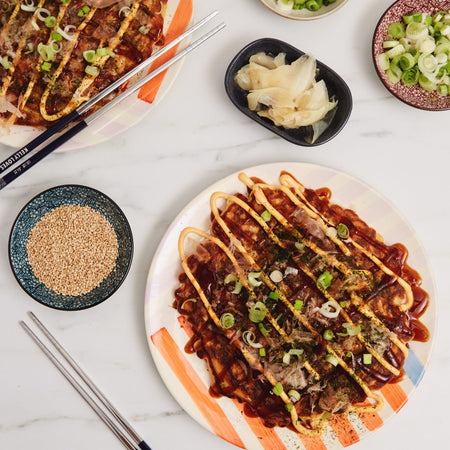Types of soy sauce
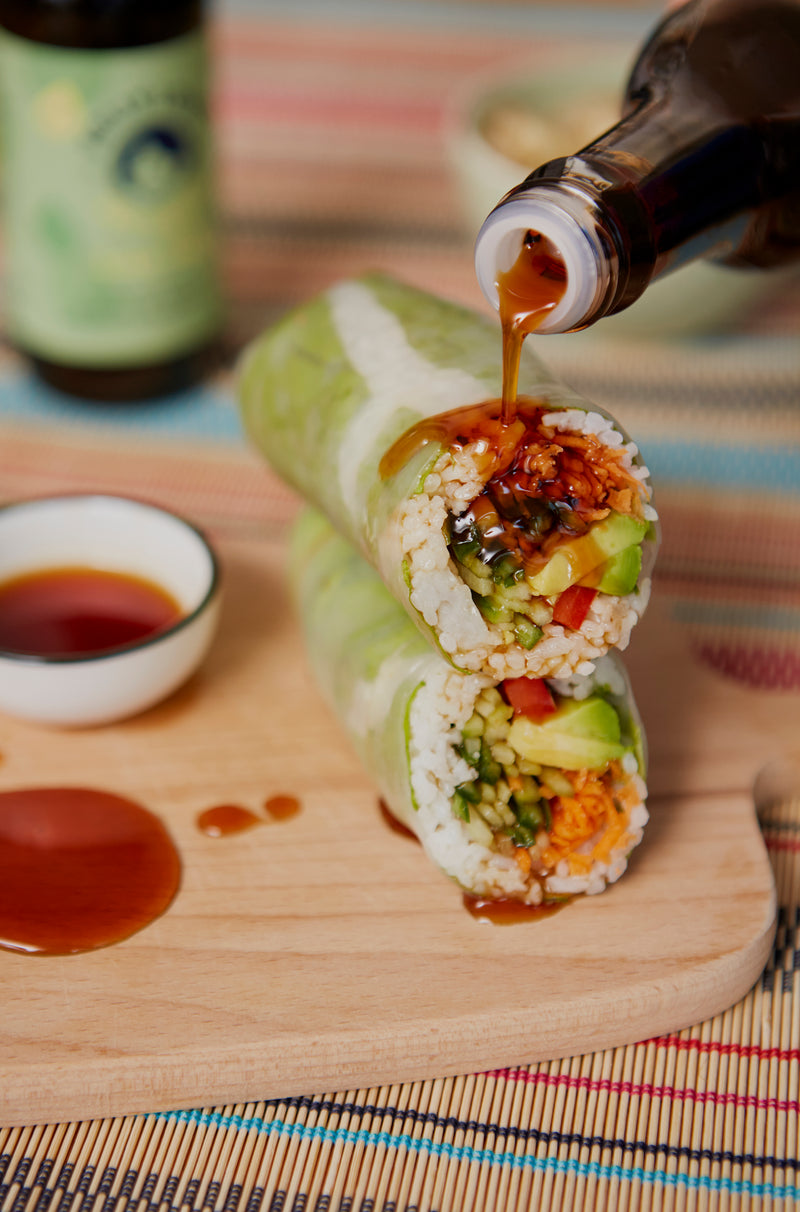
From a premium soy sauce for a special occasion that has been brewed for many years in oak barrels, to the favourite go-to soy sauces in Japanese and Korean households - there are so many to choose from. The differences come from geographical location, ingredients and brewing times.
Rather than ferment soybeans for months or years, most of us don’t make our own soy sauce, we buy it. But what are the features that we need to look out for when shopping with so many different varieties? What’s the best soy sauce for sushi? Which is best for soups? Do you use light or dark soy sauce for a stir-fry? Let’s delve into the rich, umami world of soy sauce and find out…
What are the different types of Japanese soy sauce?
Koikuchi shoyu
A standard bottle of Japanese soy sauce might not be labelled ‘koikuchi shoyu’, but if it doesn’t state it, it probably is. Koikuchi shoyu is a dark soy sauce and the general go-to Japanese soy sauce made from soybeans and wheat. It tastes sweet, sour and umami in equal measures. It’s become the most popular type of soy sauce in Japan simply because it’s so versatile, it works well with anything. Our dark classic soy sauce is the perfect type of soy sauce dipping sushi.
Usukuchi shoyu
Usukuchi shoyu is light in colour and higher in salt with less umami compared to dark soy sauces. It’s used for dishes where you don’t want any dark colour to be added such as braises or Japanese mixed rice called takikomi gohan.
Tamari
Tamari, also known as tamari shoyu, is thicker than other Japanese soy sauces and is a great dipping sauce for sushi as it won’t overwhelm the subtle fish flavours. Plus it’s great for those seeking a gluten-free or vegan option (double check the label). It’s usually made without wheat — simply soybeans, water and salt. Tamari is made from miso paste (the liquid that drains from it as the paste ages). You can use tamari for stir-fries, stews or marinades or to season tofu and roasted nuts or dip juicy dumplings in.
Shiro shoyu
Shiro shoyu, also known as white soy sauce, has a pale colour as the name suggests. It is made using much more wheat than the other soy sauces, and less soybean. The extra wheat gives it a gentle, subtle flavour. This soy sauce is ideal for adding umami to soups without colouring the soup. And it’s another good choice for dipping sushi because its flavour won’t overpower the sushi ingredients.
Saishikomi shoyu
Most people are familiar with dark or light soy sauce, but saishikomi is made from blending soy sauces and it’s double-fermented (such a show-off) for extra colour and flavour.
What are the different types of Chinese soy sauce?
Light Chinese soy sauce
Light Chinese soy sauce is used more than any other soy sauce in China. It’s used for so many dishes: soups, stir-fries, marinades and dipping sauces. It’s reddish-brown in colour with a thin consistency and a salty umami flavour. The main ingredients should be just soybeans, wheat, water and salt.
Here’s a tip when label checking for quality: alcohol as a flavour enhancer should come after the main ingredients on the list as it should only contain the tiniest amount.
Chinese light soy sauce can be paired with dark soy sauce if you want to add some richness and colour to the dish. We tend to add soy sauce at the end of cooking, but in Chinese dishes, it's added at the beginning (as Chinese light soy sauce is very salty, make sure you taste-test as you go!).
Dark Chinese soy sauce
Dark Chinese soy sauce is slightly sweeter, saltier, thicker and of course much darker in colour than light Chinese soy sauce. This sauce is used to add flavour, but primarily to darken the colour of Chinese cuisine. Think of all those rich, glossy dark amber-coloured dishes you love. Dishes such as fried rice or noodles use it to add that rich colour (for example, Cantonese pan-fried noodles). It’s also used to darken sauces and stir-fries such as beef and broccoli. Delicious.
What are the different types of Korean soy sauce?
Joseon ganjang
This Korean soy sauce (also known as soup soy sauce) is saltier than regular soy sauce so a little will go far. It’s also lighter in colour but strong in flavour so it’s useful for flavouring clear soups without darkening the colour. Joseon ganjang is made during the doenjang (soybean paste) making process — the soy sauce is the leftover liquid from the fermentation. As well as being the go-to soy sauce for Korean soups, it’s also the perfect seasoning for namul. Namul is wholesome Korean edible leaves and greens which have been well seasoned. Spring veggies are called san-namul and wild greens are called san-namul. On the first full moon of the new lunar year (the day of Daeboreum, meaning ‘Great Full Moon’) Koreans eat five-grain rice with boreum-namul.
Yangjo ganjang
‘Yangjo’ means naturally brewed fermentation as opposed to the sped-up chemical process that jin ganjang goes through (more on that next). Sometimes it is called ‘Japanese soy sauce’ because of the mass production method which was introduced by the Japanese. Yangjo ganjang is considered to be a much better quality soy sauce compared to soy sauces which have been chemically processed and blended.
Jin ganjang
Jin ganjang is a blended soy sauce, a mix of naturally brewed yangjo ganjang and chemically produced soy sauce. It’s not as good quality, but Koreans will buy this if they simply prefer the taste or they have a large amount of marinating or braising to do (it is often cheaper). In this case, they might prefer to use yangjo ganjang as a dipping sauce when a higher quality soy sauce is needed to taste it straight-up without cooking.
Whatever soy sauce you choose, check the label to make sure it says ‘naturally brewed’ because that means it’s been fermented for longer. Also, check that the ingredients list has as few ingredients as possible. Chemically processed soy sauce often contains additional nasties like flavourings or unhealthy sugary additions like corn syrup. Naturally brewed soy sauce also has a depth and complexity of flavour due to the long fermentation process that can’t be replicated by the chemical process. One final tip: soy sauce lasts well when opened, especially if you keep it in the fridge, but oxygen is bad for soy sauce, so preferably buy smaller bottles and restock when you need more.
If you can’t decide what to start with, take a look at our soy sauce collection. Kelly Loves soy sauces are all naturally brewed using the highest quality ingredients so you’ll taste the difference! Our collection includes sweet soy sauce and reduced salt soy sauce for more choice. Not only does a lot of love go into making them, with a long natural fermentation process, but all are vegan, MSG-free and palm oil free!
